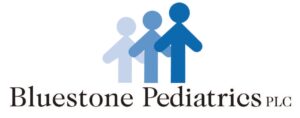
Breastmilk Collection and Storage
There may be a time when you need to express breastmilk and feed to your baby using a bottle. The mechanism used to express breastmilk varies from manual expression to electric breast pumps. It is important to find the pump that best fits you and your baby’s needs. If you need help determining which method is best for you refer to one of the resources listed or contact your pediatrician.
Collecting Breastmilk
- Wash hands well with soap and water.
- Wash all the collecting bottles and breastpump parts that touch your breasts or the milk. Use hot, soapy water or a dishwasher. Rinse carefully. Air dry on a clean towel. If your baby is premature or ill, the hospital may ask you to sterilize your pump parts.
- Read the instruction book that comes with your pump and follow the suggestions. Sterilize your pump parts once a day as described.
- Practice pumping when you are rested, relaxed and your breasts feel full. Once a day try to nurse your baby only on one side and pump the other breast. Or pump for a few minutes if your baby skips a feeding or nurses for only a short while. Read the Storage Guidelines chart to learn how to store breast milk.
- Employed moms can help their baby learn to take a bottle once breastfeeding is going well. It is best to wait for 3 to 4 weeks to introduce bottles. If you are having problems breastfeeding, ask for help.
- Begin to pump to store milk 1 to 2 weeks before returning to work. Many employed moms use the fresh milk they pump at work for feedings the next day.
- Pump 3 times during an 8 hour work shift, or every 3 hours you are away from your baby. Ten minutes of pumping during breaks and 15 minutes of pumping during lunch with a good pump will help protect your milk supply. If you can’t pump 3 times, pump as much as you can during each day. Breastfeeding in the evening and over the weekend helps your milk supply and protects your special bond with your baby.
Storing Breastmilk
- It is normal for pumped milk to vary in color, consistency and scent depending on your diet. Stored milk separates into layers. Gently swirl the warmed bottle to mix the milk layers.
- You can continue to add small amounts of cooled breastmilk to the same refrigerated container throughout the day. Avoid adding warm milk to already cooled milk.
- Store your milk in glass or plastic containers, or in milk storage bags made especially for breastmilk storage that are leak-proof, easy-to-close zipper top. Place smaller bags inside a larger food storage bag to prevent accidental punctures.
- Freeze milk in 2 to 5 oz portions. Small amounts will thaw more quickly. You will waste less milk this way and will avoid over-feeding. Liquids expand when frozen. Be sure to leave some extra room at the top of the container so the bottle or bag won’t burst.
- Seal containers tightly. Write the date on a piece of masking tape on the bag or bottle. Use the oldest milk first.
- If you do not plan to use the milk within a few days, freeze it right away in the coldest section of your freezer. Do not place the bottle or bag up against the wall of the freezer.
Defrosting
- Thaw milk overnight in the refrigerator, or hold the bottle under warm running water to quickly thaw. You can also place the sealed container in a bowl of warm water for 20 minutes to bring it to body temperature.
- Thawed milk is safe in the refrigerator for 24 hours. Do not refreeze.
CAUTION: Never microwave breastmilk. Microwaving can cause severe burns to baby’s mouth from hot spots that develop in the milk during microwaving. Microwaving can also change the composition of breastmilk.
Tips for Feeding Breastmilk with a Bottle
- Choose a slow-flow bottle nipple and limit feeding size to 3 to 5 oz of milk for babies younger than 6 months.
- Remove the bottle nipple out of the baby’s mouth periodically to let the baby catch his or her breath.
- Pause to burp the baby when needed.
- If baby seems fussy in between feedings it may be because of thirst. Offer 1 to 2 oz of milk. Babies 6 months or older can have a sip of water from a cup.
- Avoid over-feeding. Offer a pacifier or teething toy to give your baby more sucking enjoyment after finishing a bottle.
Adapted from Medela.com
ADDRESS
Bluestone Pediatrics
4059 Quarles Court
Rockingham, VA 22801
PHONE
Phone number: (540) 437-4800
Fax #: (540) 437-9012
Billing Office: (540) 434-1512
After-hours and weekend emergency phone number: (540) 432-7311
APPOINTMENTS
CHECK-UPS AND SICK VISITS
MONDAY – FRIDAY
8:00 A.M. – 5:00 P.M.
WALK-IN HOURS
ACUTE ILLNESS ONLY:
MONDAY — FRIDAY
8:00 AM — 9:00 AM
SATURDAY
9:00 AM — 11:00 AM
SUNDAY
9:00 AM — 11:00 AM
© 2024 Bluestone Pediatrics | All Rights Reserved | Site design KWGraphicsandWeb
Lorem ipsum dolor sit amet, consectetur adipiscing elit. Ut elit tellus, luctus nec ullamcorper mattis, pulvinar dapibus leo.
